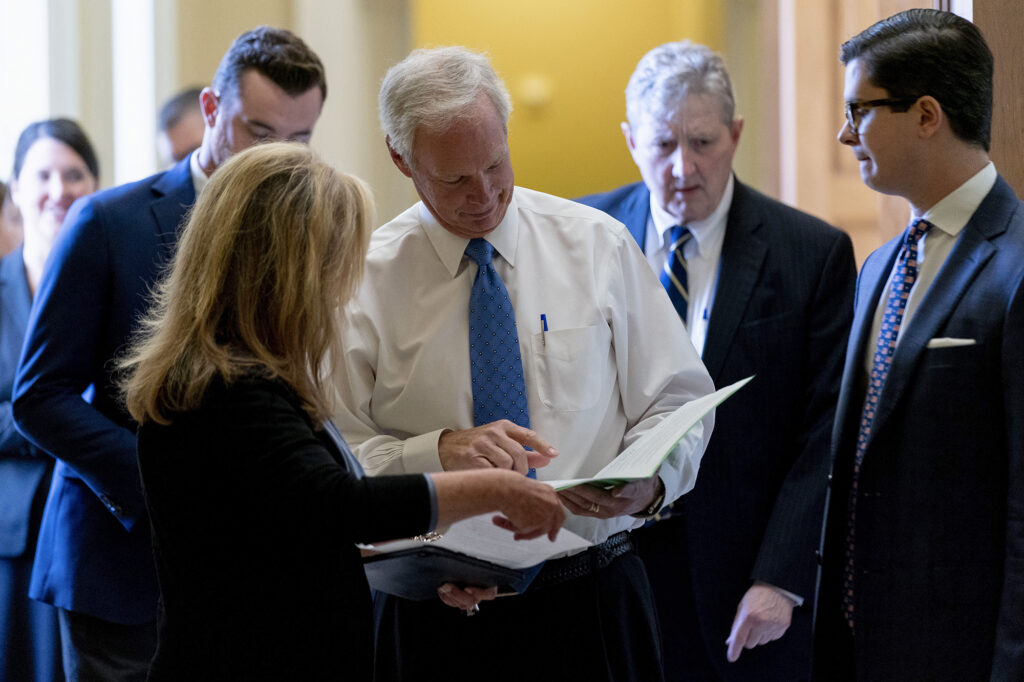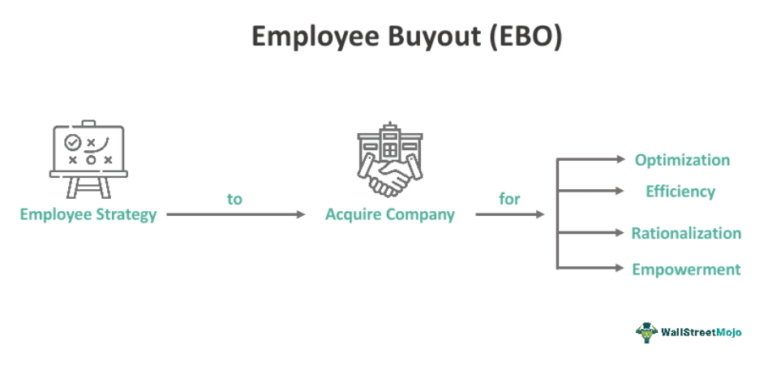
From left, Sen. Marsha Blackburn, R-Tenn., Sen. Ron Johnson, R-Wis., and Sen. John Kennedy, R-La., leave a republican policy luncheon as the Senate moves from passage of the infrastructure bill to focus on a massive $3.5 trillion budget resolution, a blueprint of President Joe Biden's top domestic policy ambitions, at the Capitol in Washington, Tuesday, Aug. 10, 2021. (AP Photo/Andrew Harnik)
Audience
- Sentiment: Neutral
- Political Group: Republican
- Age Group: 30-50
- Gender: Male
Overview
- Senate Republican leaders are advancing their budget resolution despite Trump supporting a different House plan.
- The House plan aims to implement Trump’s ‘America First’ agenda, focusing on various priorities, while the Senate’s approach is more restrained.
- Democrats are preparing to challenge the Republican budget, arguing it benefits the wealthy at the expense of middle-class programs.
Senate Moves Forward on Budget Resolution Amid Trump Support for House Plan
The world of politics can sometimes feel like a whirlwind, especially when it comes to talking about a government budget. It becomes even more interesting when big names like President Trump and various Senate leaders get involved. This week, the Senate is digging into budget resolutions, and there’s a lot going on, especially with the House having its own version of a budget plan. Buckle up, because we’re about to dive into the nitty-gritty of these budget resolutions, what they mean, and why they’re important.
The Budget Tango: Senate vs. House
To start, what exactly is a budget resolution? Great question! A budget resolution is like a financial blueprint for the government. It lays out how much money the government plans to spend, how it will raise that money, and what priorities it will focus on for the upcoming year. Think of it as a family deciding how to spend their income – you have to decide which bills to pay, which vacations to take, and how to save for the future.
This week, Senate Republican leaders are pushing forward with their budget resolution, even though President Trump is backing a different plan proposed by the House of Representatives. The House plan is a big deal because it aims to put Trump’s “America First” agenda into action. This agenda includes various policies that Trump believes will benefit American citizens and businesses. The House plan is relatively broad and ambitious, trying to cram in a lot of priorities all at once.
However, the Senate is taking a different approach. Their proposal doesn’t include everything that the House’s plan does. For example, it puts a strong focus on immigration enforcement and energy production but trails off when it comes to tax cuts and spending increases – two topics that are hotly debated in the political arena. It’s like choosing to have a pizza night with just cheese and no toppings. While some might enjoy the simplicity, others will definitely feel disappointed.
The Showdown Between the Two Chambers
The tension between the Senate and the House can resemble a competitive sports game, where each team has its own strategy. Senate Majority Leader John Thune is confident in the Senate’s plan, expressing doubts about whether the House can pull their broader plan together. It’s almost as if Thune is saying, “We’ve got our game plan, and we’re ready to play. I’m not so sure about your game, House!”
Citizens and lawmakers alike wonder, “What’s going to happen if the House plan doesn’t work out?” Thune, along with other Senate Republicans, is well aware of this potential pitfall. That’s why they’re ensuring that they have a backup plan, just in case things go awry in the House. It’s an interesting strategy, showing that even though they support Trump’s agenda, they’re preparing for potential hurdles down the road.
With Trump endorsing the House’s more comprehensive approach, it’s clear he wants a unified plan that will implement his priorities without division. But even he understands that sometimes, flexibility is necessary. “It’s great to have goals, but you also need to plan for the unexpected,” you can almost picture him saying.
The Democratic Response
Now, let’s talk about the other side of the aisle – the Democrats. As you might expect, they are not sitting idly by while these budget battles unfold. They are preparing to challenge the Republicans’ budget resolution vigorously. Democrats are raising alarms about the Republican budget, arguing that it’s merely a way to funnel tax cuts to the wealthy while sacrificing funding for critical programs that help middle-class Americans.
Imagine if your school decided to allocate way more money to sports while cutting funds for art or music programs. Wouldn’t that upset a lot of students? Similarly, Democrats believe that the Republican budget favors the rich and ignores the needs of everyday Americans. As negotiations heat up, you can be sure both parties will bring their best arguments to the table, trying to convince each other and the public of their perspectives.
The Importance of Negotiation
Budget discussions in the Senate can get intense. It often feels like a chess game, with each party trying to strategize and outmaneuver the other. Negotiation becomes key during this process. It’s not just about winning or losing; it’s about what can be agreed upon that serves the interests of the country as a whole. Just because the Republicans are in control of the Senate doesn’t mean they’ll get everything they want without some give-and-take.
Also, we shouldn’t overlook the fact that many Americans are closely following these developments. They want to ensure that their voices are heard and that their needs are met. It’s important for lawmakers to listen to their constituents. After all, the budget affects schools, healthcare, infrastructure, and countless other aspects of everyday life.
The Bigger Picture
At the end of the day, budget resolutions are about so much more than just numbers. They reflect the values and priorities of our government and influence how resources are allocated to different sectors. Whether it’s funding for public schools, healthcare for families, or even projects that promote clean energy, the budget determines what gets funded and what does not.
One important aspect that some argue is lacking in both the House and Senate proposals is a focus on environmental issues. With climate change being a pressing challenge, the need for budgets that prioritize Earth-friendly initiatives is growing. It’s almost like being handed a shopping cart full of groceries and being told what to buy – you want to make sure you’re selecting items that will sustain both your household and the planet.
Gathering Thoughts
As we watch the results of the negotiations unfold, it’s essential to consider what budget resolutions mean for us as citizens. Are our needs being met? Are we being taken into consideration when these decisions are made? The process can appear confusing, but it’s a critical part of how our society organizes itself financially.
Let’s not forget that as students and future leaders, it’s essential to stay informed and engaged with these processes. After all, policy decisions made today shape the world we will inherit tomorrow.
So here’s a question for you: What are your priorities when it comes to government spending? Do you believe that funding should go more towards education, healthcare, or environmental issues? I’d love to hear your thoughts in the comments below!





